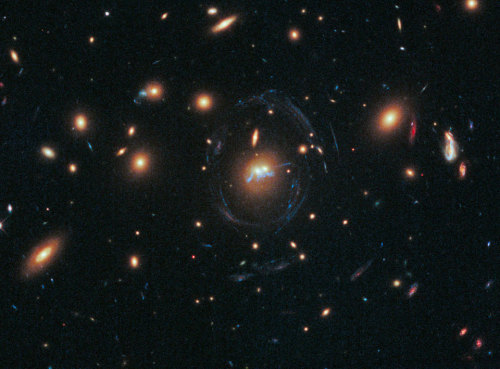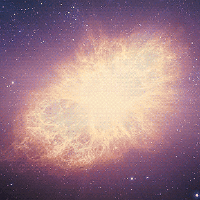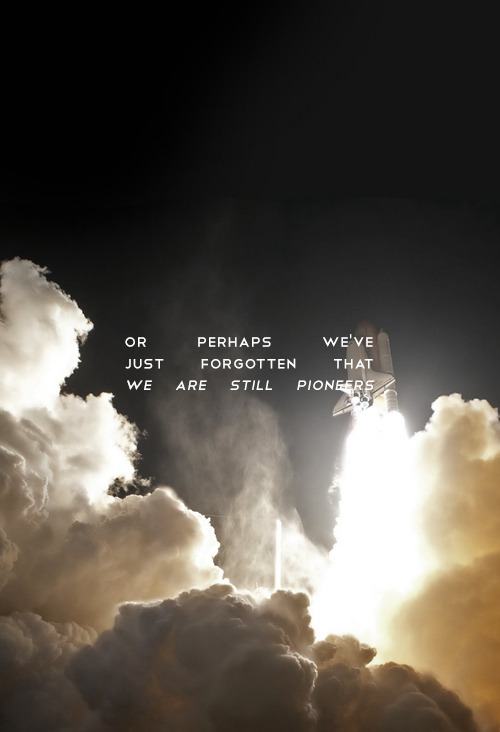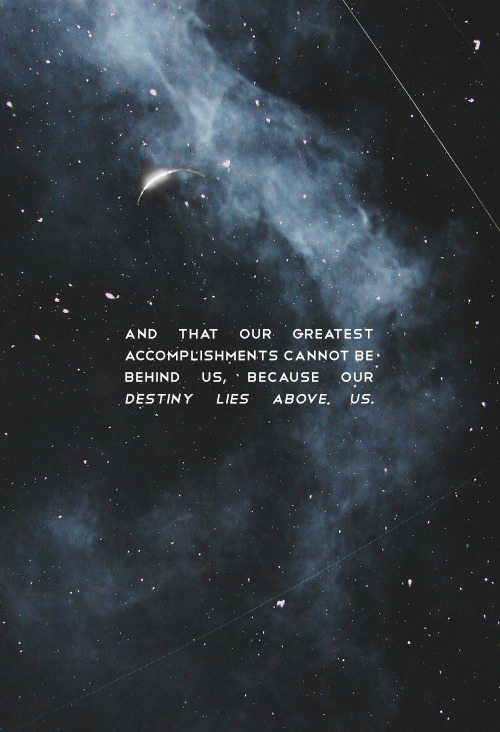Nasa Spots Mysterious Heart-shaped Craters On The Surface Of Mars. Mars Wishes You Love ❤

Nasa spots mysterious heart-shaped craters on the surface of Mars. Mars wishes you love ❤
More Posts from Intergalacticnerd and Others


Picture of the Day: Messier 9 Star Cluster
NASA’s Hubble Space Telescope has taken this incredible picture of Messier 9, a globular star cluster located near the center of our galaxy. The cluster, located some 25,000 light years away, is too faint to be seen with the naked eye, but Hubble has captured more than 250,000 individual stars there. Globular clusters are believed to have emerged when the galaxy was quite young, and the stars that make up Messier 9 are calculated to be around twice as old as our sun.

All Quiet in the Nursery?
The dark patch snaking across this spectacular image of a field of stars in the constellation of Ophiuchus (The Serpent-bearer) is not quite what it appears to be.
Although it looks as if there are no stars here, they are hidden behind this dense cloud of dust that blocks out their light. This particular dark cloud is known as LDN 1768.
Despite their rather dull appearance, dark nebulae like LDN 1768 are of huge interest to astronomers, as it is here that new stars form. Inside these vast stellar nurseries there are protostars — stars at the earliest stage of their lives, still coalescing out of the gas and dust in the cloud.
Eventually, the protostars will become dense and hot enough to start the nuclear reactions that will produce visible light and they will start to shine. When this happens, they will blow away the cocoon of dust surrounding them and cause any remaining gas to emit light as well, creating the spectacular light show known as an HII region.
Credit: ESO








Images of Hubble Ultra Deep Field (the farthest we’ve ever seen into the universe) and it’s close-ups. Astronomers, in 1996, attempted something extraordinary. They pointed the Hubble Space Telescope into a part of the sky that seemed utterly empty, a patch devoid of any planets, stars and galaxies. This area was close to the Big Dipper, a very familiar constellation. The patch of sky was no bigger than a grain of sand held out at arms length. There was a real risk that the images returned would be as black as the space at which it was being pointed. Nevertheless, they opened the telescope and slowly, over the course of 10 full days, photons that had been travelling for over 13 billion years finally ended their journey on the detector of humanity’s most powerful telescope. When the telescope was finally closed, the light from over 3,000 galaxies had covered the detector, producing one of the most profound and humbling images in all of human history - every single spot, smear, and dot was an entire galaxy, each one containing hundreds of billions of stars.
Later, in 2004, they did it again, this time pointing the telescope toward an area near the constellation Orion. They opened the shutter for over 11 days and 400 complete orbits around the Earth. Detectors with increased sensitivity and filters that allowed more light through than ever before allowed over 10,000 galaxies to appear in what became known as the Ultra Deep Field, an image that represented the farthest we’ve ever seen into the universe.The photons from these galaxies left when the universe was only 500 million years old, and 13 billion years later, they end their long journey as a small blip on a telescope’s CCD.
There are over 100 billion galaxies in the universe. Simply saying that number doesn’t really mean much to us because it doesn’t provide any context. Our brains have no way to accurately put that in any meaningful perspective. When we look at this image, however, and think about the context of how it was made, and really understand what it means, we instantly gain the perspective and cannot help but be forever changed by it. We pointed the most powerful telescope ever built by human beings at absolutely nothing, for no other reason than because we were curious, and discovered that we occupy a very tiny place in the heavens.

Southern Cross by Carlos Fairbairn
js

A Laser Strike at the Galactic Center

A Blue Bridge of Stars between Cluster Galaxies designated SDSS J1531+3414








Great Nebula of our Galaxy
A Nebula is an interstellar cloud of dust, hydrogen, helium and other ionized gases located within our cosmos. Long ago Nebula was used as a term for any diffuse astronomical object, including galaxies beyond the Milky Way. As our knowledge of the universe expanded, so did our knowledge of Nebulae.
Credit: NASA/ESA/Image sources
Cassini Top 10 Images and Science Results of 2015
As our Cassini spacecraft enters its final 20 months before its plunge into Saturn, the mission’s science team has selected their top 10 images from 2015 (above), a year of historic discoveries, as well as the top science results (below). Take a look:
1. First Deep Seafloor Hydrothermal Vents Found Beyond Earth

Cassini found the first evidence of active hot-water chemistry beyond planet Earth. An extensive, four-year analysis of data from the spacecraft, computer simulations and laboratory experiments led researchers to the conclusion the tiny silica (SiCO2) grains most likely form when hot water containing dissolved minerals from the moon’s rocky interior travels upward, coming into contact with cooler water.
2. Global Ocean Beneath Enceladus’ Surface

A global ocean lies beneath the icy crust of Saturn’s geologically active moon Enceladus. Scientists analyzed more than seven years’ worth of images of Enceladus taken by the spacecraft, which has been orbiting Saturn since mid-2004. As a result, they found Enceladus has a tiny, but measurable wobble as it orbits Saturn. This proves that there must be a global layer of liquid separating the surface from the core.
3. Titan Observed Outside of Saturnian Magnetosphere

During Cassini’s flyby of Titan, the giant moon happened to be on the sunward side of Saturn when a powerful outburst of solar activity reached the planet. The strong surge in the solar wind so compressed the sun-facing side of Saturn’s magnetosphere that the bubble’s outer edge was pushed inside the orbit of Titan. This left the moon exposed to, and unprotected from, the raging stream of energetic solar particles. The region of space dominated by Saturn’s magnetic field is called the magnetosphere.
4. Density of a Ring Particles May Indicate Recent Origins

Saturn’s A ring was found to be warmer than expected at the planet’s equinox, and also had an unusually large thermal asymmetry about the equinox. This could be due to the A ring being mostly composed of denser particles made primarily of solid ice, with a thin top layer of fluffy regolith.
5. Titan Southern Polar Ice Cloud

Scientists have detected a monstrous new cloud of frozen compounds in Titan’s low- to mid-stratosphere – a stable atmospheric region above the troposphere, or active weather layer.
6. Curtain Vents on Enceladus?

New research using data from Cassini suggests most of the eruptions from Saturn’s moon Enceladus might actually be diffuse curtains rather than discrete jets. Many features that appear to be individuals jets of material erupting along the length of prominent “tiger stripe” fractures in the moon’s south polar region might be phantoms created by an optical illusion, according to the new study.
7. Discovery of Tethys Red Arcs

Like graffiti sprayed by an unknown artist, unexplained arc-shaped, reddish streaks are visible on the surface of Saturn’s icy moon Tethys. The origin of the features and their reddish color is a mystery to scientists.
8. Saturn’s 30-year Giant Storms Powered by Water Convection

Changes in temperature and the composition of the hydrogen-laden air within the remnants of a giant storm system on Saturn reveal that air was lofted more than 120 miles in altitude from the deeper water condensation levels.
9. Seasonal Change Seen at Saturn’s Poles

Saturn’s polar regions have displayed extreme seasonal changes during Cassini’s decade-long watch, providing the most comprehensive view ever obtained of seasonal change on a giant planet.
10. Huygens Probe Imaging Mosaic of Titan’s Surface and Descent Movie

Ten years ago, an explorer from Earth, the Huygens probe, was released from the Cassini spacecraft and parachuted into the haze of an alien moon toward an uncertain fate. After a gentle descent lasting more than two hours, it landed with a thud on a frigid floodplain on Titan, surrounded by icy cobblestones.
Make sure to follow us on Tumblr for your regular dose of space: http://nasa.tumblr.com
-
 helloevad liked this · 1 week ago
helloevad liked this · 1 week ago -
 virtuteetarmis reblogged this · 1 week ago
virtuteetarmis reblogged this · 1 week ago -
 cierraaariel liked this · 1 week ago
cierraaariel liked this · 1 week ago -
 the-4-knights reblogged this · 1 week ago
the-4-knights reblogged this · 1 week ago -
 the-4-knights liked this · 1 week ago
the-4-knights liked this · 1 week ago -
 muddascunt reblogged this · 1 week ago
muddascunt reblogged this · 1 week ago -
 mutenostrilagony reblogged this · 1 week ago
mutenostrilagony reblogged this · 1 week ago -
 crazyeyedshawty reblogged this · 1 week ago
crazyeyedshawty reblogged this · 1 week ago -
 a-god-in-ruins-rises reblogged this · 1 week ago
a-god-in-ruins-rises reblogged this · 1 week ago -
 7evnty reblogged this · 1 week ago
7evnty reblogged this · 1 week ago -
 loversrawk liked this · 1 week ago
loversrawk liked this · 1 week ago -
 daddylonglegz72 liked this · 1 week ago
daddylonglegz72 liked this · 1 week ago -
 the-eternal-moonshine liked this · 1 week ago
the-eternal-moonshine liked this · 1 week ago -
 solilyoquist reblogged this · 1 week ago
solilyoquist reblogged this · 1 week ago -
 thegateofdawn reblogged this · 1 week ago
thegateofdawn reblogged this · 1 week ago -
 thegateofdawn liked this · 1 week ago
thegateofdawn liked this · 1 week ago -
 kawaiicutthroat liked this · 1 week ago
kawaiicutthroat liked this · 1 week ago -
 kawaiicutthroat reblogged this · 1 week ago
kawaiicutthroat reblogged this · 1 week ago -
 etherique liked this · 2 weeks ago
etherique liked this · 2 weeks ago -
 crazycherub reblogged this · 2 weeks ago
crazycherub reblogged this · 2 weeks ago -
 crazycherub liked this · 2 weeks ago
crazycherub liked this · 2 weeks ago -
 fonfetti liked this · 2 weeks ago
fonfetti liked this · 2 weeks ago -
 pink-ribbon liked this · 2 weeks ago
pink-ribbon liked this · 2 weeks ago -
 princessdarkheart44 reblogged this · 2 weeks ago
princessdarkheart44 reblogged this · 2 weeks ago -
 honeyroasteddisappointment liked this · 2 weeks ago
honeyroasteddisappointment liked this · 2 weeks ago -
 pinkprincesscore reblogged this · 2 weeks ago
pinkprincesscore reblogged this · 2 weeks ago -
 pinkprincesscore liked this · 2 weeks ago
pinkprincesscore liked this · 2 weeks ago -
 nurcie reblogged this · 2 weeks ago
nurcie reblogged this · 2 weeks ago -
 fatalebridget reblogged this · 2 weeks ago
fatalebridget reblogged this · 2 weeks ago -
 fatalebridget liked this · 2 weeks ago
fatalebridget liked this · 2 weeks ago -
 makingmefearless reblogged this · 2 weeks ago
makingmefearless reblogged this · 2 weeks ago -
 mi-arrepentimiento reblogged this · 2 weeks ago
mi-arrepentimiento reblogged this · 2 weeks ago -
 bubudubs reblogged this · 2 weeks ago
bubudubs reblogged this · 2 weeks ago -
 geriatricsenseofself liked this · 2 weeks ago
geriatricsenseofself liked this · 2 weeks ago -
 introverted-astrophile reblogged this · 2 weeks ago
introverted-astrophile reblogged this · 2 weeks ago -
 itsyaboyeric liked this · 3 weeks ago
itsyaboyeric liked this · 3 weeks ago -
 wetbloodfarts reblogged this · 3 weeks ago
wetbloodfarts reblogged this · 3 weeks ago -
 wetbloodfarts liked this · 3 weeks ago
wetbloodfarts liked this · 3 weeks ago -
 braiin-r0t reblogged this · 3 weeks ago
braiin-r0t reblogged this · 3 weeks ago -
 cute-alma123 reblogged this · 3 weeks ago
cute-alma123 reblogged this · 3 weeks ago -
 cute-alma123 liked this · 3 weeks ago
cute-alma123 liked this · 3 weeks ago -
 toabstter liked this · 3 weeks ago
toabstter liked this · 3 weeks ago -
 departedearly reblogged this · 3 weeks ago
departedearly reblogged this · 3 weeks ago -
 uchiha-itachi-amaterasu liked this · 3 weeks ago
uchiha-itachi-amaterasu liked this · 3 weeks ago -
 geceninkaranliktanricasi reblogged this · 1 month ago
geceninkaranliktanricasi reblogged this · 1 month ago -
 pearly-sadness reblogged this · 1 month ago
pearly-sadness reblogged this · 1 month ago -
 pearly-sadness liked this · 1 month ago
pearly-sadness liked this · 1 month ago
"Astronomy compels the soul to look upwards and leads us from this world to another." - Plato
147 posts









